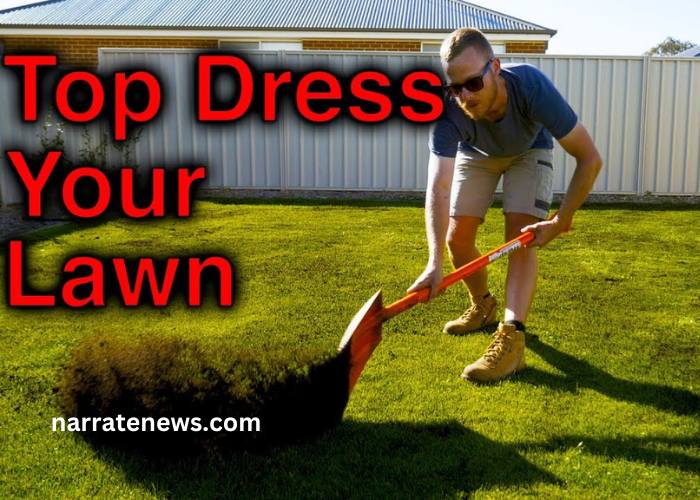
Top Soil for Lawns: A Comprehensive Guide
The lush, green carpet of a well-maintained lawn is a sight to behold. It provides a serene aesthetic, a comfortable space for outdoor activities, and enhances the overall value of a property. However, achieving and maintaining such a lawn requires more than just regular watering and mowing. The foundation of a healthy lawn lies beneath the grass – in the topsoil. This article delves into the importance of topsoil for lawns, what makes good topsoil, how to choose the right topsoil, and tips for its application and maintenance.
Understanding Topsoil
Topsoil is the uppermost layer of soil, typically ranging from 2 to 8 inches deep, and is where most plant roots grow. It contains a high concentration of organic matter and microorganisms, which are essential for plant growth. Good topsoil provides the nutrients, water retention, and structure that grass and other plants need to thrive.
Importance of Topsoil for Lawns
Nutrient Supply: Topsoil is rich in nutrients like nitrogen, phosphorus, and potassium, which are crucial for grass growth. These nutrients support healthy root development, vibrant green color, and resilience against pests and diseases.
Water Retention and Drainage: Quality topsoil has a balanced composition that retains moisture while allowing excess water to drain away. This balance prevents both drought stress and waterlogging, which can harm the grass.
Root Support and Aeration: Good topsoil provides a stable structure for roots to anchor and grow. It also maintains proper aeration, ensuring roots get enough oxygen, which is vital for their health and growth.
Microbial Activity: Healthy topsoil is teeming with beneficial microorganisms that break down organic matter, releasing nutrients that plants can absorb. These microorganisms also help protect plants from pathogens.
Characteristics of Good Topsoil
Not all topsoil is created equal. The quality of topsoil can vary significantly depending on its source and composition. Here are key characteristics to look for:
Texture: Ideal topsoil has a loamy texture, which is a balanced mix of sand, silt, and clay. Loamy soil offers good drainage, moisture retention, and ease of root penetration.
pH Level: The pH level of topsoil should be between 6.0 and 7.5 for most lawn grasses. Soil that is too acidic or too alkaline can hinder nutrient absorption.
Organic Matter: High levels of organic matter (5-10%) are essential for soil fertility. Organic matter improves soil structure, water retention, and provides a food source for beneficial microbes.
Nutrient Content: Quality topsoil should have sufficient levels of essential nutrients. Testing the soil before application can help determine its nutrient profile and any amendments needed.
Free of Contaminants: Ensure the topsoil is free of harmful contaminants like heavy metals, toxins, and pathogens, which can damage plants and pose health risks.
Choosing the Right Topsoil for Your Lawn
Selecting the appropriate topsoil involves several considerations:
Source: Purchase topsoil from reputable suppliers who provide soil testing results. Avoid soil that has been taken from construction sites or areas that may be contaminated.
Purpose: Different lawns have varying needs. For new lawns, a higher quality, nutrient-rich topsoil is essential. For existing lawns, topdressing with a slightly less rich topsoil may be sufficient.
Soil Testing: Conduct a soil test to understand the current state of your lawn’s soil. This will help you determine what type of topsoil and amendments you need.
Volume: Calculate the amount of topsoil needed. Generally, a depth of 4-6 inches of topsoil is recommended for new lawns, while 1/4 to 1/2 inch is sufficient for topdressing an existing lawn.
Applying Topsoil to Your Lawn
Proper application of topsoil is crucial to ensure its benefits are maximized. Here are the steps for both new lawns and existing lawns:
For New Lawns
Prepare the Site: Clear the area of debris, rocks, and weeds. If necessary, grade the site to ensure proper drainage.
Loosen the Soil: Use a tiller to loosen the existing soil to a depth of about 6-8 inches. This will help the new topsoil integrate better.
Apply the Topsoil: Spread the topsoil evenly across the prepared area. Use a rake to level it out, ensuring a uniform depth of about 4-6 inches.
Amend if Necessary: Based on your soil test, add any necessary amendments like lime (to adjust pH), compost (to increase organic matter), or fertilizer (to boost nutrient levels).
Sow Grass Seed or Lay Sod: Once the topsoil is in place, proceed with sowing grass seed or laying sod. Water the area thoroughly to help the grass establish.
For Existing Lawns
Mow and Dethatch: Mow the lawn to a short height and remove any thatch or debris that could hinder the application of topsoil.
Aerate the Lawn: Aerating the lawn helps improve soil structure and allows the topsoil to integrate better with the existing soil.
Apply the Topsoil: Spread a thin layer (1/4 to 1/2 inch) of topsoil evenly over the lawn. Use a rake to distribute it, ensuring it settles into the aeration holes and between the grass blades.
Water Thoroughly: Water the lawn thoroughly after applying the topsoil. This helps the soil settle and provides moisture for the grass.
Maintaining Your Lawn After Topsoil Application
After applying topsoil, proper maintenance is key to ensuring a healthy lawn:
Watering: Water the lawn regularly to keep the soil moist but not waterlogged. Newly sown lawns may require daily watering, while established lawns may need watering 2-3 times a week.
Mowing: Mow the lawn regularly to encourage dense growth. Avoid cutting more than one-third of the grass height at a time to prevent stress.
Fertilizing: Apply fertilizer according to your soil test results and the specific needs of your grass type. Avoid over-fertilizing, which can lead to nutrient runoff and pollution.
Weed Control: Monitor for weeds and remove them promptly. Use organic or chemical weed control methods as needed.
Aeration and Dethatching: Periodically aerate and dethatch your lawn to maintain good soil structure and reduce compaction.
Common Problems and Solutions
Even with the best practices, lawns can encounter issues. Here are some common problems and their solutions:
Poor Drainage: If your lawn has areas that remain soggy after rain, you may need to improve drainage. Aerating, adding organic matter, or installing a drainage system can help.
Compacted Soil: Compacted soil restricts root growth and water infiltration. Regular aeration and the addition of organic matter can alleviate compaction.
Nutrient Deficiencies: Yellowing grass or poor growth may indicate nutrient deficiencies. Conduct a soil test and amend the soil with the appropriate fertilizers.
Pest Infestations: Monitor for signs of pests such as grubs or insects. Use integrated pest management (IPM) techniques to address pest problems.
Weed Invasion: Weeds compete with grass for nutrients and space. Maintain a thick, healthy lawn to outcompete weeds and use appropriate weed control methods.
Conclusion
The foundation of a beautiful and healthy lawn lies in the quality of its topsoil. By understanding the characteristics of good topsoil, choosing the right type, and applying it correctly, you can create an environment where grass thrives. Regular maintenance, including watering, mowing, fertilizing, and aeration, will help sustain the health of your lawn. By addressing common problems promptly and effectively, you can enjoy a lush, green lawn that enhances the beauty and value of your property.
Investing time and effort in your lawn’s topsoil will pay off in the form of a vibrant and resilient lawn, providing a space for relaxation, recreation, and enjoyment for years to come.


